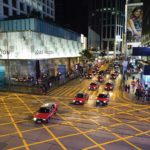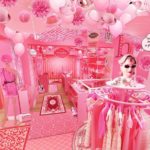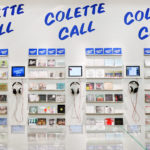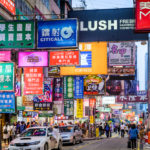What is a pop-up shop? Everything you need to know to try short-term retail > 23 Smart Pop Up Shop Ideas to Steal From These Successful Brands
The last couple of years have seen pop up stores exploding to a point they are becoming key to any retail strategy. We’ve selected some of the most successful & creative pop-up store examples from around the world, with the key takeaways you can learn from. Get inspiration from these pop-up shop ideas and create customers for life!
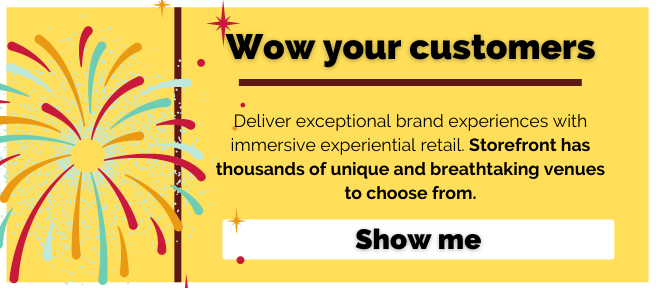
Pop up store concepts for expanding reach to untapped customer bases
1. Kanye West: giving access to merch beyond the concert venues
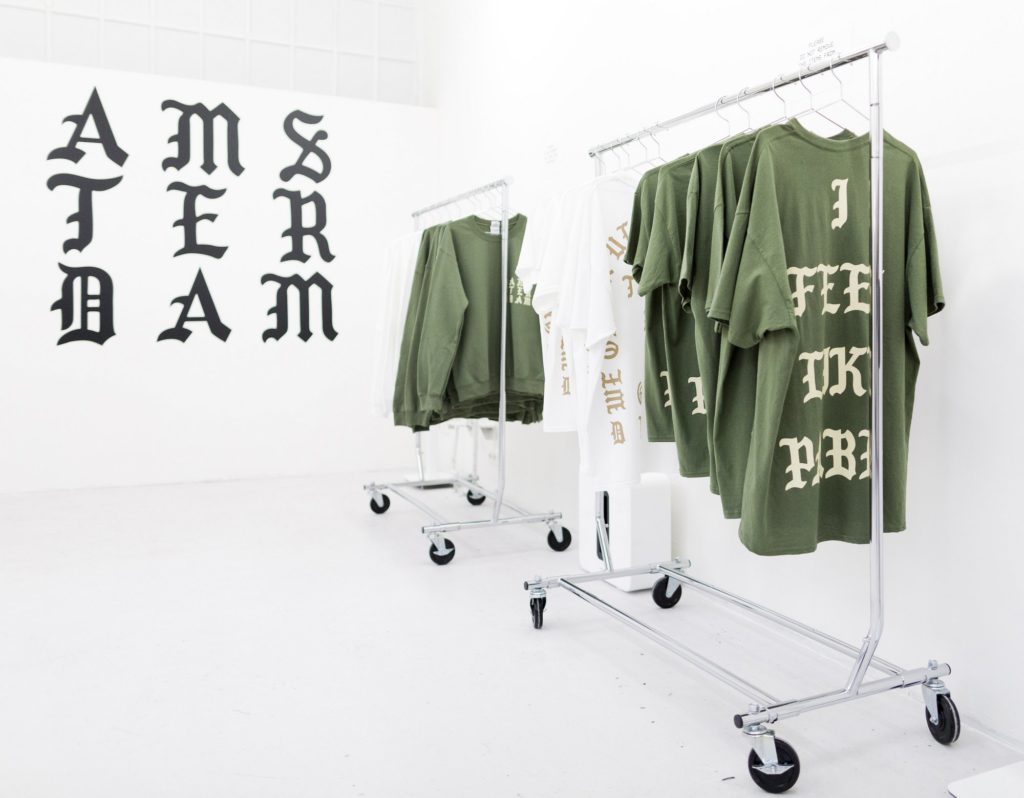
Kanye West‘s live performances being systematically sold out, his team decided, instead of going the traditional route and selling fan gear inside the concert venue, to open a pop-up in a public space where fans could purchase branded apparel even if they couldn’t score concert tickets. Which showed tremendous success, as this is a tactic used for every tour: after the first attempt with Storefront support for the Yeezus tour, the king of grandeur established his Life of Pablo merch pop-up shop not in 1, but 21 cities around the world. The shops were opened for Yeezy fans to purchase exclusive products for a few days in cities such as Amsterdam, Berlin, London, Los Angeles, Miami, Philadelphia, Singapore, Melbourne or Cape Town.
Success Takeaway: Kanye himself claimed the stores made a staggering $1 million dollars in two days.
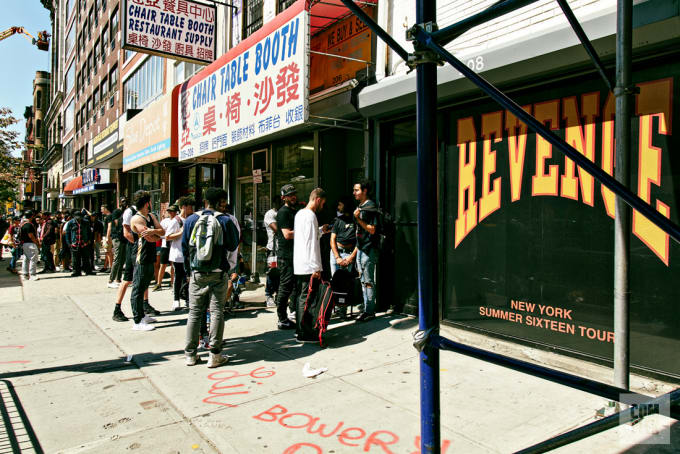
Just like Kanye & along with a lot of other rappers or singers, Drizzy also launched his own merch pop-up shops tours. Drake stopped in New York and Los Angeles to sell Drizzy-quote-emblazoned tees, hoodies and caps to mobs of excited fans.
2. Kylie Jenner: foray into physical retail
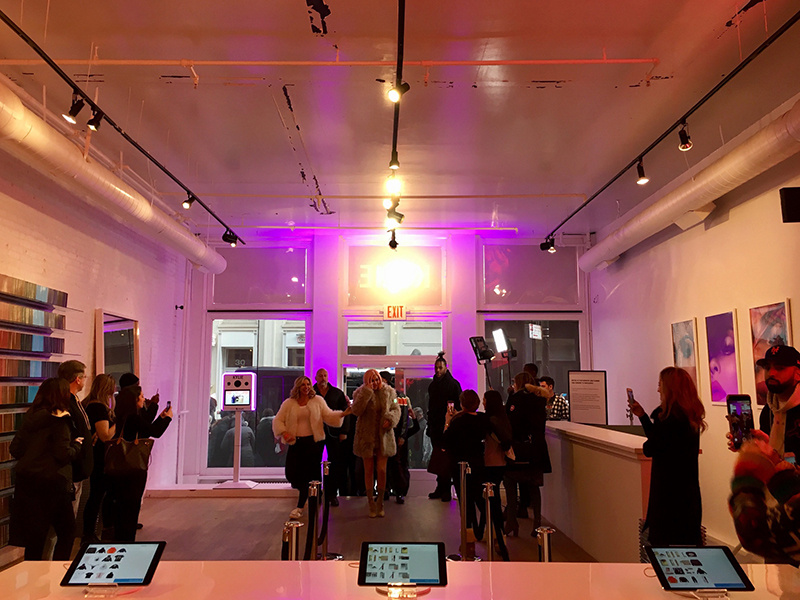
Reality TV star and makeup sensation Kylie Jenner has mobilized the crowds with her Kylie pop-up in Los Angeles. Customers were able to shop Kylie Cosmetics products previously only available online, including the unprecedented holiday collection, but also merch products such as lingerie, hoodies, and t-shirts with the celebrity’s name or face.
3. Seapony: making the rounds to expand its audience
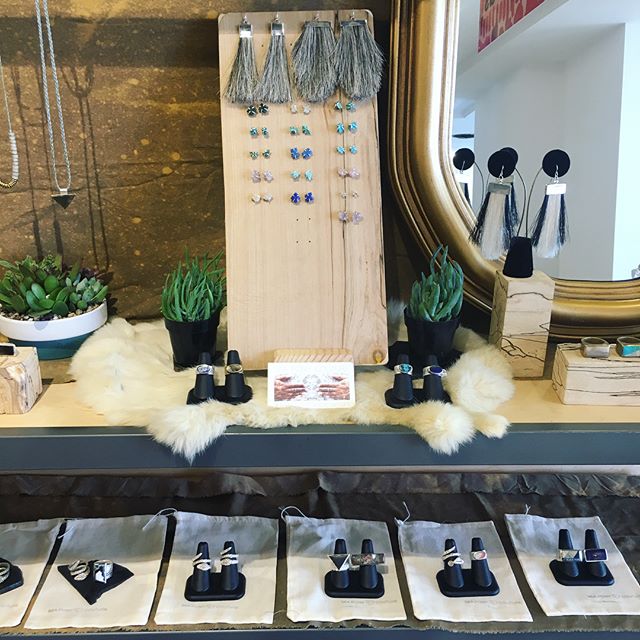
Seapony Couture is a bold accessories line that has benefited from opening several jewelry pop-up stores in various San Francisco neighborhoods. By engaging with different demographics, the brand gained wider exposure and increased networking opportunities.
4. Topshelf: selling on the road as a lifestyle
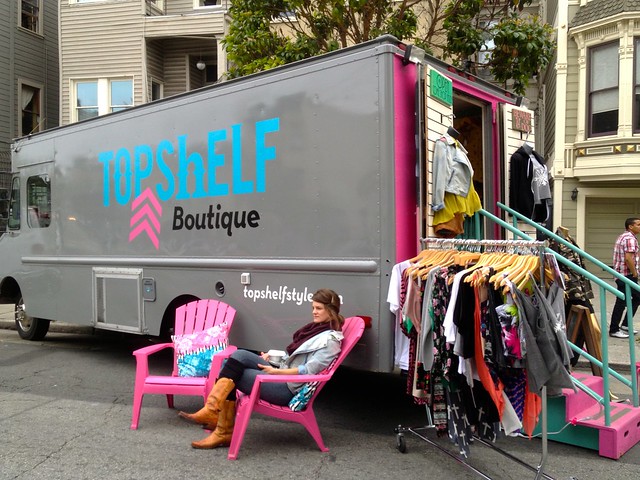
Mobile fashion truck TopShelf was used to rolling into craft fairs, markets, and other outdoor events. By thinking outside of the mobile “box” and opening up a stationary Pop-Up Store, TopShelf gained a steady, loyal customer base. This could also work for food trucks, car companies, and brands that utilize kiosks and vending machines.
Pop up store ideas bridging online and offline
5. Art.com: going offline to offer inspiration and discovery
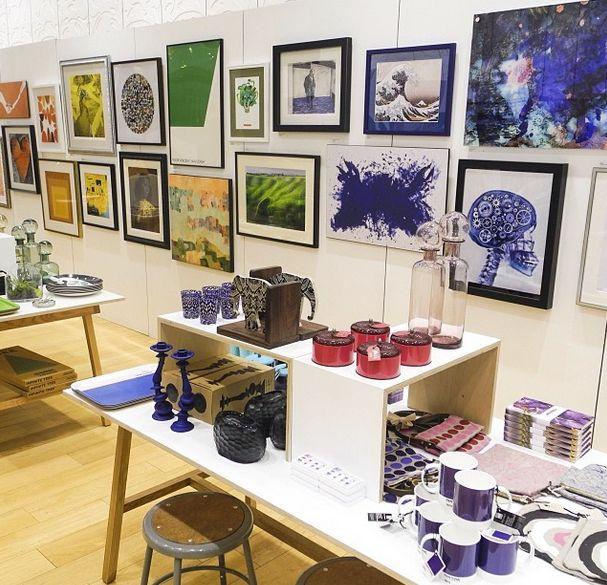
Art.com is a leading online marketplace for fine art prints. But it’s one thing to see a jpeg of Van Gogh’s “Starry Night” on a computer screen and another to appreciate it in person. In a pioneering move at the time, the platform opened with Storefront a one-month pop-up gallery in San Francisco to showcase together art and other unique crafts. Noticeable features:
- Online-to-Offline: projection in the store a crowdsourced real-time showcase of art trending on art.com’s community feed
- Design Bar: assistance from design experts to find and custom-frame the pieces
- Curation of collections from art experts and participating designers, rotating exhibitions
- Instant photo printing from Instagram or camera roll and turning them into art. A feature that was particularly innovative at the time (2013!)
6. J.Hilburn: custom fitting as the first foray into physical retail
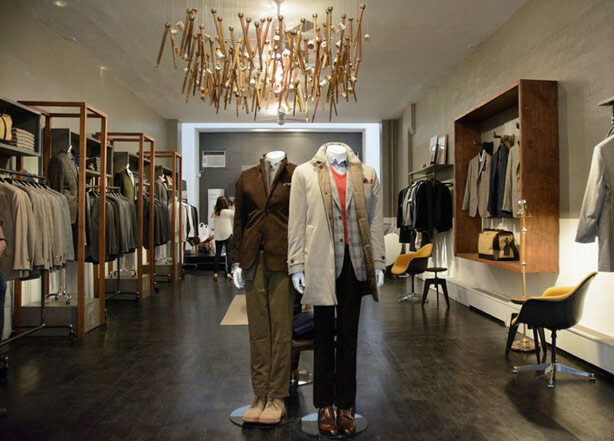
Until this, J.Hilburn had sold exclusively online and through its direct sales model, directly sending to customers at their home or office. Through their first pop up store A Fortnight in SoHo, the brand’s trained personal stylists were treating shoppers to a signature custom fitting and help them find the perfect items to match their lifestyle and personality, creating a truly personalized experience. With meticulous attention to detail, the space was treated like a canvas where the fine details recede and allow the clothes to shine. Particularly notable: knowing that its target customers weren’t fond of marathon shopping sprees, the shop featured elegant seating that encouraged shoppers to unwind and appreciate their surroundings.
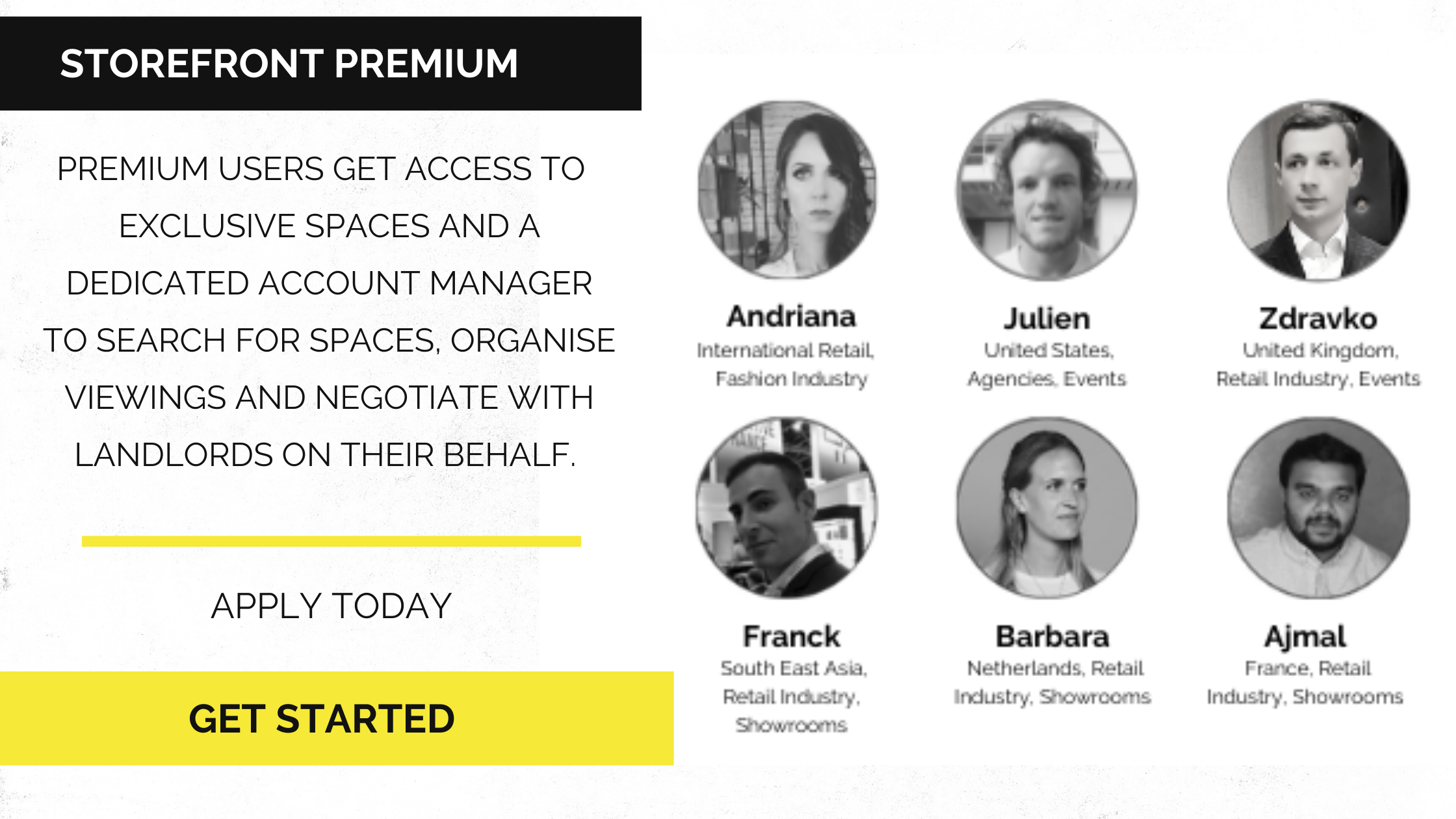
7. Storenvy: gathering ecommerce brands under one umbrella
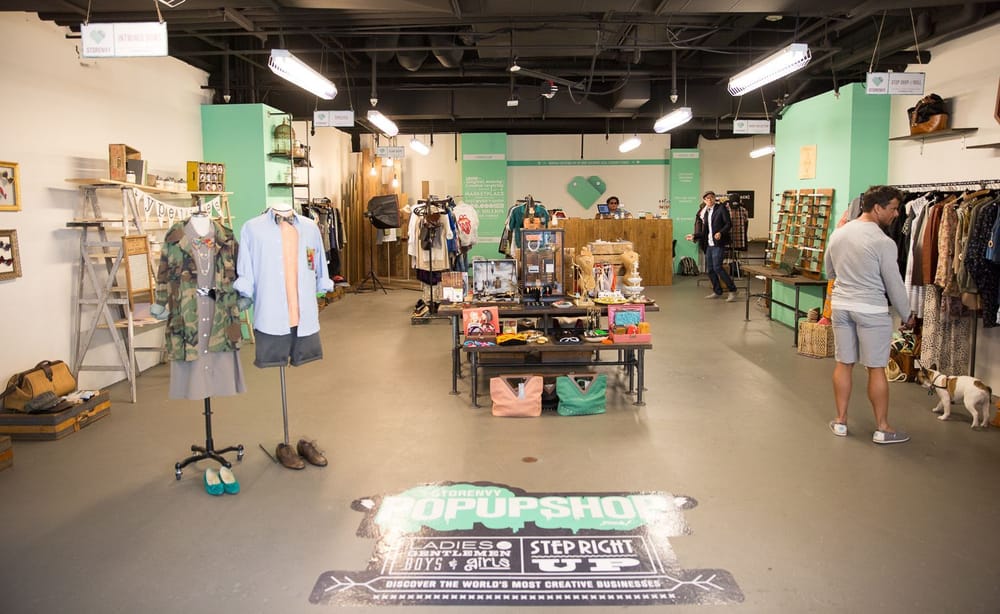
Storenvy understands that there is power in numbers. The ecommerce platform played host to a pop-up marketplace in San Francisco. Brands who used Storenvy to power their ecommerce operations were invited to participate in an offline store, which allowed Storenvy to leverage multiple brands’ followings to build hype and foot traffic.
What’s really interesting with this popup is transactions are still done online, not with a POS, and each vendor is completely in control of his or her own spot.
8. ThredUP, RealReal & Luxury Garage Sale: leveraging online data to setup physical pop up locations
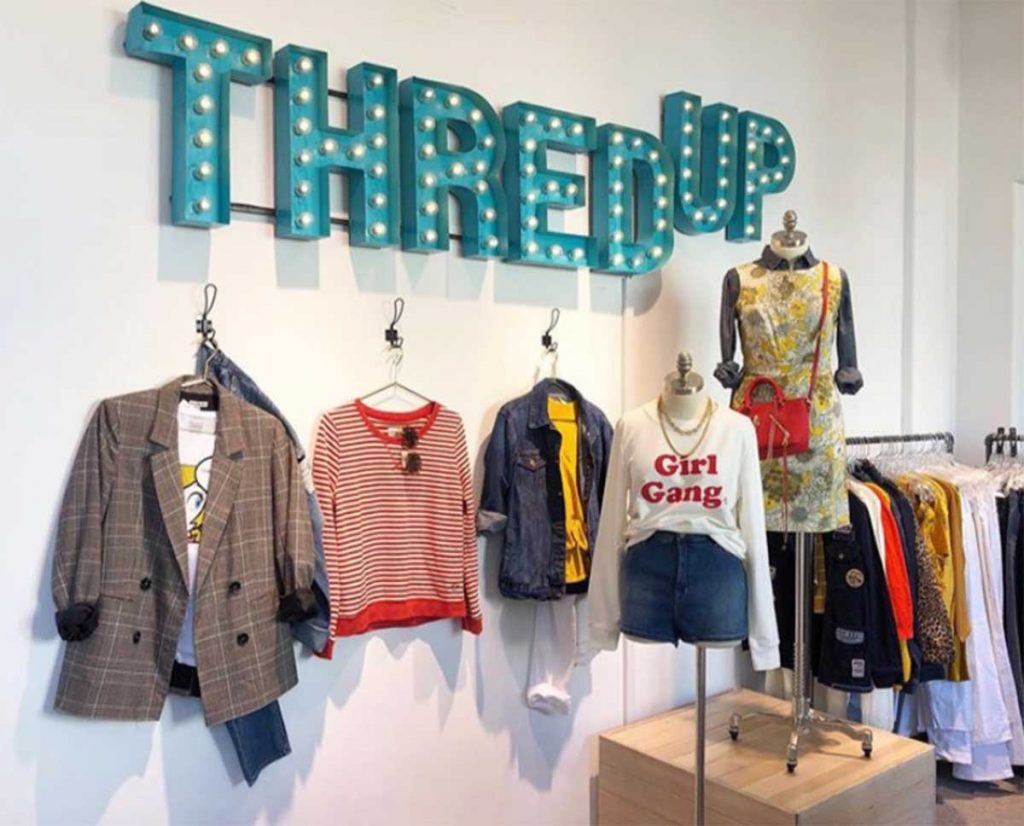
Today, people have become smarter shoppers not only with their pockets but by sharing exclusive deals and sales with each other. This is facilitated even more with social media. Retailers and secondhand e-commerce companies like ThredUp, the RealReal and Luxury Garage Sale are cashing in on the consignment concept using customer data its already collected online and translating it into the physical realm.
As ThredUp is experimenting with brick-and-mortar locations, Luxury Garage Sales announced a month-long pop-up shop idea in Atlanta. This cool pop up shop idea offers one-on-one styling and full-service consignment purposes.
The RealReal is also on a pop-up tour, rolling out pop up shop display activations in new cities to capture its online audience through in-store sales inside creative physical spaces. Utilizing the power of online marketing data and the off-pricing trend, similar brands can use this tactic to launch a pop up of their own.
Creative pop up shops to offer a unique or exclusive experience
Read More: 9 Case Studies That Prove Experiential Retail Is The Future
9. Ministry of Supply: on-demand, tailored fit
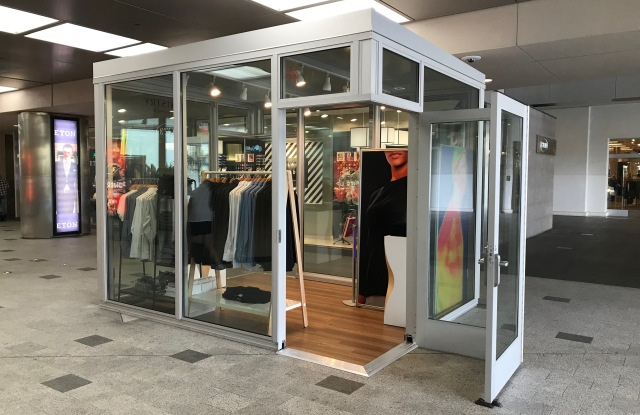
Ministry of Supply was the first company to mesh high-performance activewear with professional attire. With such an inventive and ingenious design, it made sense to capture the public’s attention before potential competitors sprang up. The DTC brand has based its retail footprint primarily on pop-ups: after a successful store in Soho, NYC, with Storefront, they launched this Santa Monica pop up equipped with thermal mirrors. The equipment finds out which part of your body produces the most heat, and allow the manufacturer to produce a 3-D Print-Knit sweater fully custom to your exact body characteristics. Customers who did not want to actually order were invited to use the thermal cameras like a photo booth for a very Instagram-able shot.
10. Nike iD Air Max: exclusive product customization
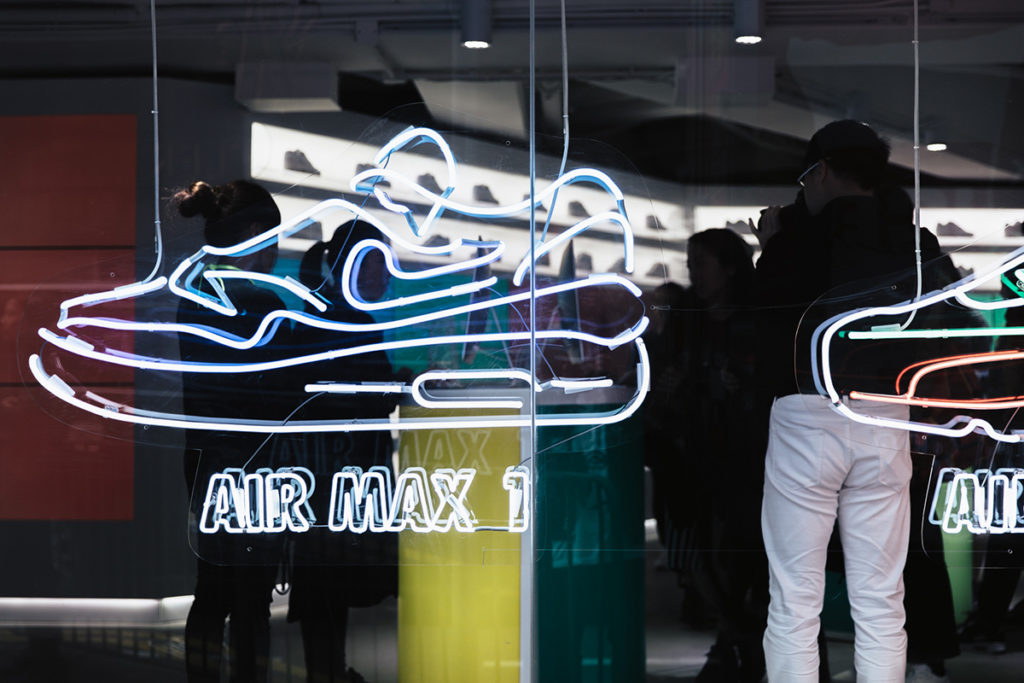
To celebrate the Air Max sneaker, Nike launched a pop-up boutique where visitors could customize and create a unique Air Max in a futuristic and colorful environment thanks to the iD platform.
11. Pantone Café: serving color-coded snacks
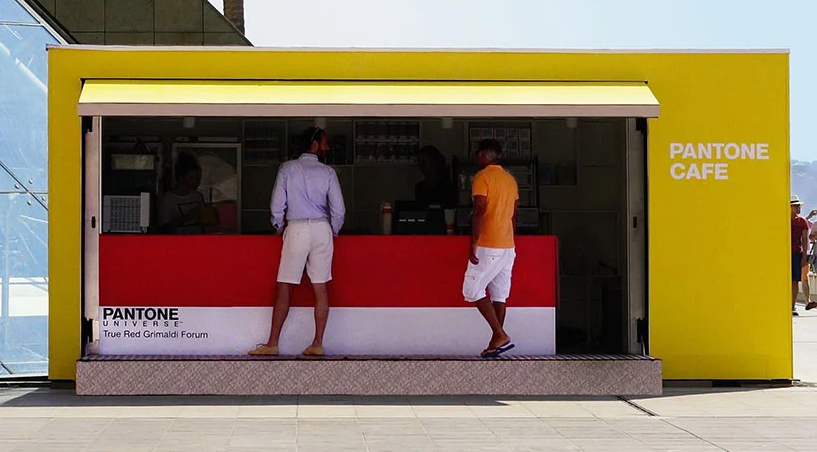
After 2 summers in Monaco, Pantone Cafe has established its café in Paris’ Jardin des Tuileries during Fashion Week, enabling us to taste the Pantone colors and stimulate all our senses. Each edible actually corresponds to a matching hue.
12. Modify Watches: collecting customer opinions
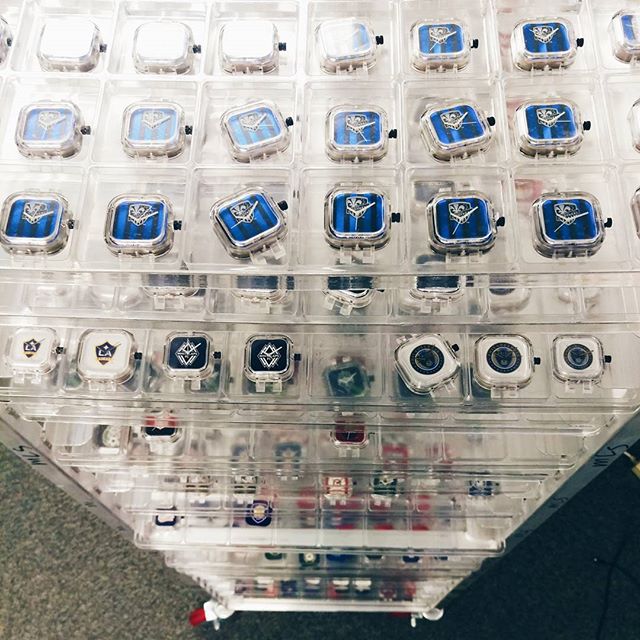
Customizable watch brand Modify Watches (now part of Custom Ink) believes in fun and originality as the cornerstone of its business model. Though the company only offers one type of product (watches), they understand that their customers aren’t created equal. Within one product category, they offer over 300 variations. The Modify Watches pop-up store functioned as both a storefront and a sounding board where customers could voice opinions about what they’d like to see in future collections. The pop up store was also a way to experience how the product was made, as the watches were assembled live.

13. Google: exclusive peek at the new tech
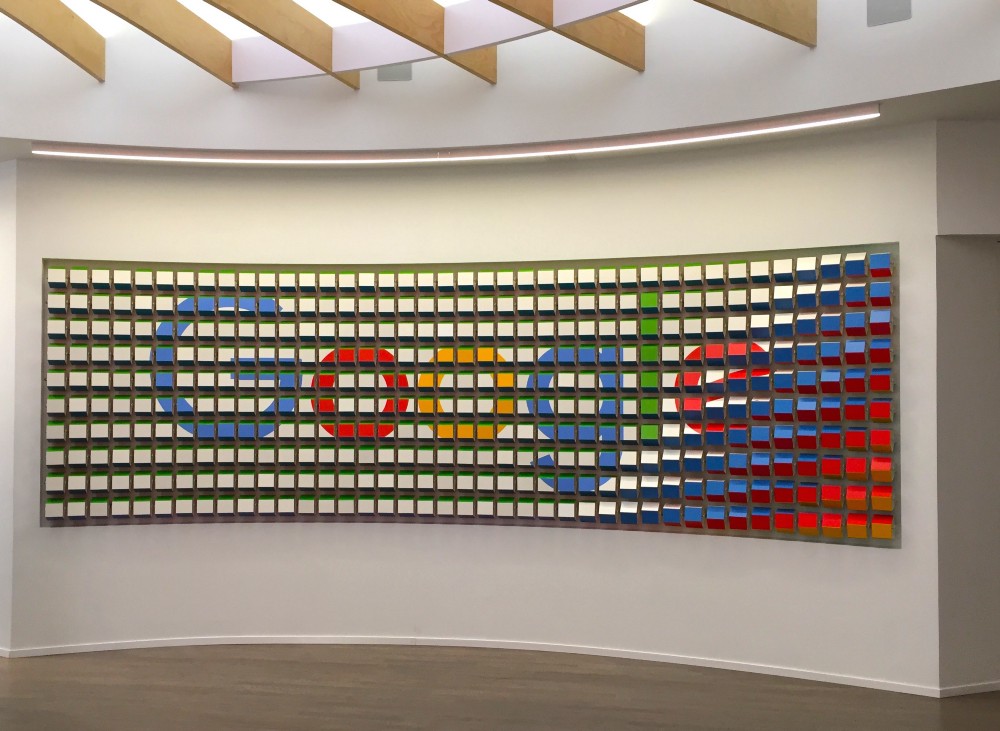
Google established itself in a New York pop up shop to showcase its latest groundbreaking products. Tech enthusiasts rushed to try the highly anticipated Pixel phone, Google Home, and Daydream VR headsets.
14. Adidas NDM 6-day street culture celebration
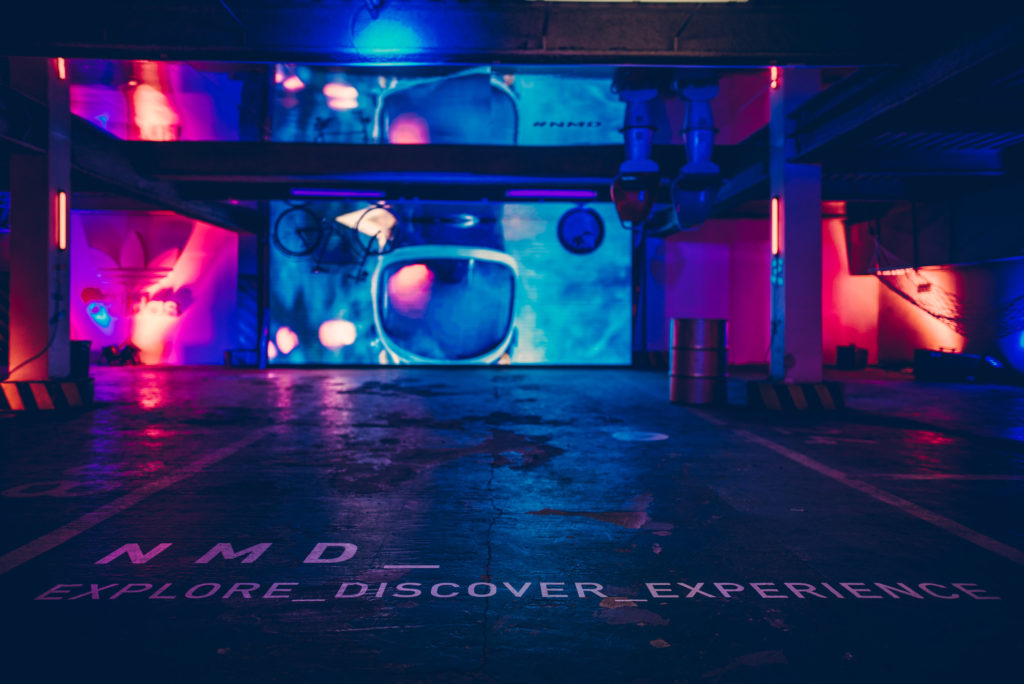
To launch its new NMD shoe brand, Adidas created one of the most hyped pop-up stores London has ever seen. Located in Shoreditch, NDM Future House was a 6-day/6-night pop-up hosting DJ sets, art performances, film screenings, and celebrating creativity, art, and underground culture.
15. RIPNDIP: mixing the shopping experience with art

The RIPNDIP label opened a shop and an art gallery to celebrate its Spring collection. The iconic character Lord Nermal the cat were painted all over the outside wall and attracted many curious visitors.
16. BEAMS Japan: creating hype for exclusive products
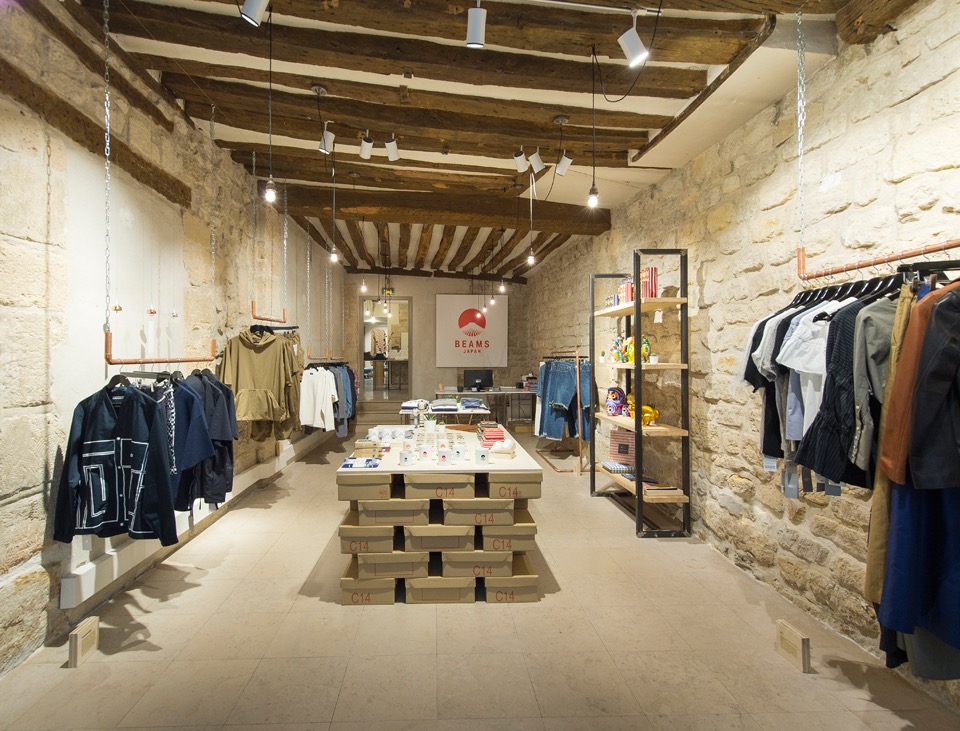
The streetwear brand made its way around the globe to settle in Paris for 12 days last summer. The Le Marais pop-up store has also featured brands such as Loopwheeler, orSlow and Sasquatchfabrix, in addition to BEAMS’ “Made in Japan” line.
17. Vetements: causing hysteria with surgically timed pop ups and flash sales
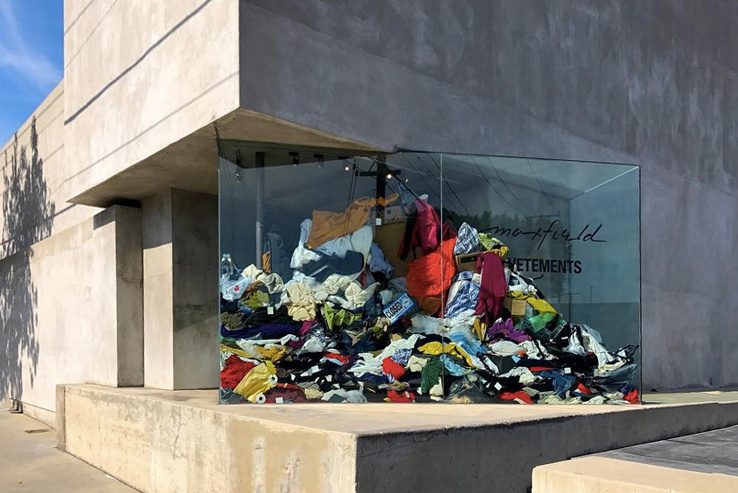
Vetements, the new fashion sensation, which every fashion show is now an unmissable event, stopped in Los Angeles for one day only. With its “Dry Cleaning”, Vetements have made one of the most innovative pop-ups.
Creating emotional appeal with your pop up shop concept
18. Fila: using nostalgia to drive sales
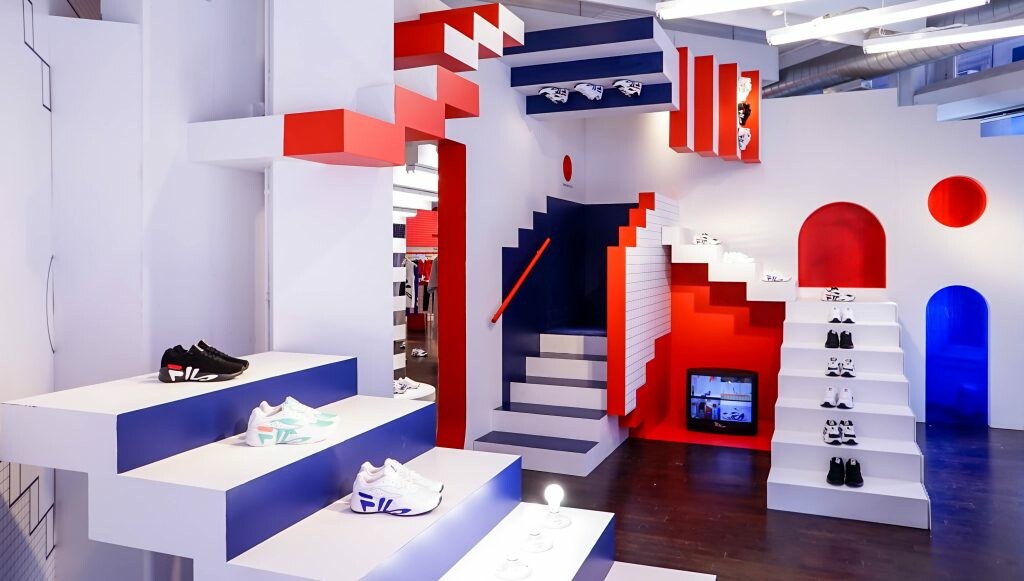
As retailers cash in on selling vintage styles and heritage pieces, pop up shop ideas are going retro. This in turn drives engagement, foot traffic, and buzz!
Fila is opening pop-up stores in NYC with Storefront – plus 3 additional ones worldwide – for the relaunch of its popular Mindblower ‘90s shoe, originally released in 1995. The brand set up its Soho shop for a limited time, and had 650 people come through its doors on just the first day.
Fila also tapped influencers to create their own version of the ‘Mindblower’ sneaker, and put them prominently on display in-store. This pop up shop display idea created a lot of media hype and drew wide attention to the space.
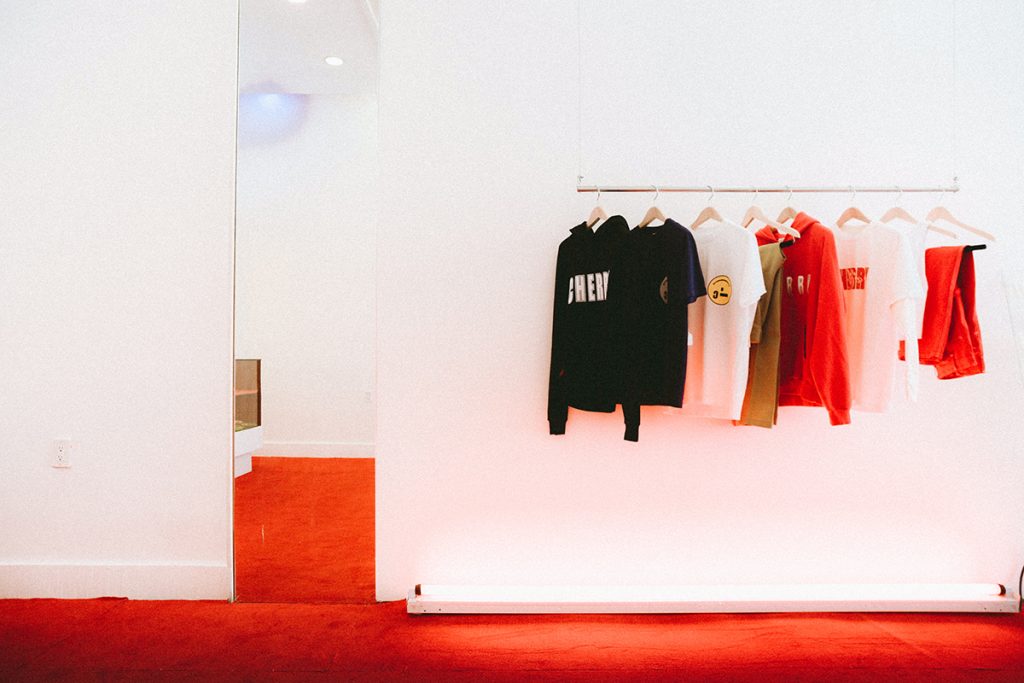
Streetwear label Cherry Los Angeles is also using nostalgia for its debut collection, opening a pop-up installation on the historic Fairfax Avenue. Titled ‘MICRODOSE’, the installation was feature iconic ‘90s images sprinkled on the pieces.
19. Northern Grade: cashing on the vintage appeal
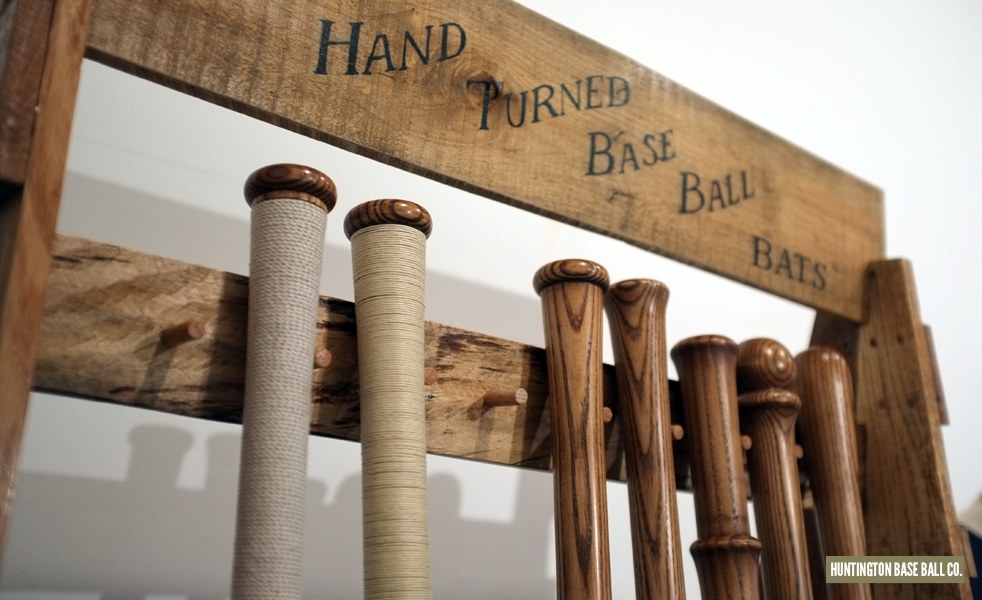
Northern Grade (now American Field) is a menswear line with classic sensibilities. In designing their pop-up shop, the Northern Grade team created an atmosphere that deeply reflected the brand’s personality using rustic tables, magnifying glasses, refurbished pallets, and vintage trunks. Walking into the pop-up shop felt like walking into a bachelor pad in the 1930s. Unique displays and lifestyle elements that represent your brand guarantee a memorable experience for anyone who walks in your store.
Popping up with a cause
20. Harrod: embracing children protection
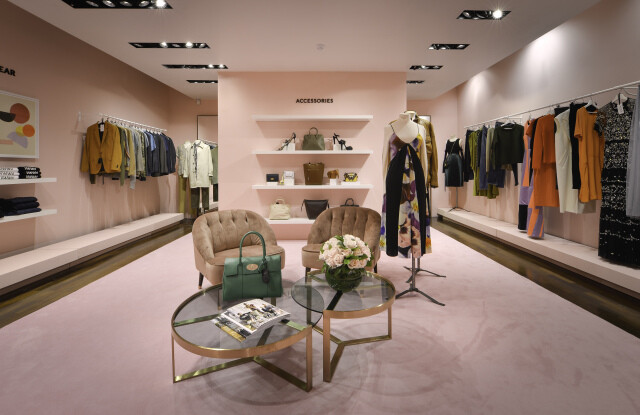
Driving consumers to your store for a charitable purpose is a pop-up shop idea brands are also successfully employing. Harrod recently unveiled its luxury charity pop-up store idea with NSPCC. The pop-up boutique, open the rest of the month, is located in a place called Fashion Re-Told. All of the clothes sold were donated by Harrod’s customers and employees, with proceeds going directly to NSPCC. The retailer’s mission for this pop-up shop idea was to make the space entirely Instagrammable. As their Head of Visual Merchandising states, “when you’re doing a charitable initiative if you don’t generate noise on every platform, you’re never going to make it a success.”
While Harrods didn’t profit from the pop-up store, their brand identity certainly gained value from it. Not only did they reinvent the experience of shopping with Harrods, but they also proved that their commitment to their values was genuine.
21. The Street Store: turning donations into a shopping experience for the homeless
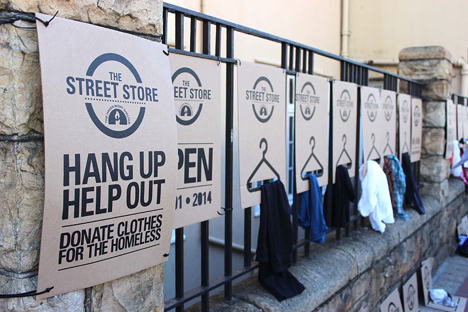
Who said that pop-up stores were just about selling products? Not Deepika Phakke of The Street Store, who with the support of Episcopal Community Services organized a pop-up giving homeless people the opportunity to freely shop for those things they need and give them dignity with a shopping experience that allows them to choose what they like.
22. TCHO: connecting the product experience with how it’s made
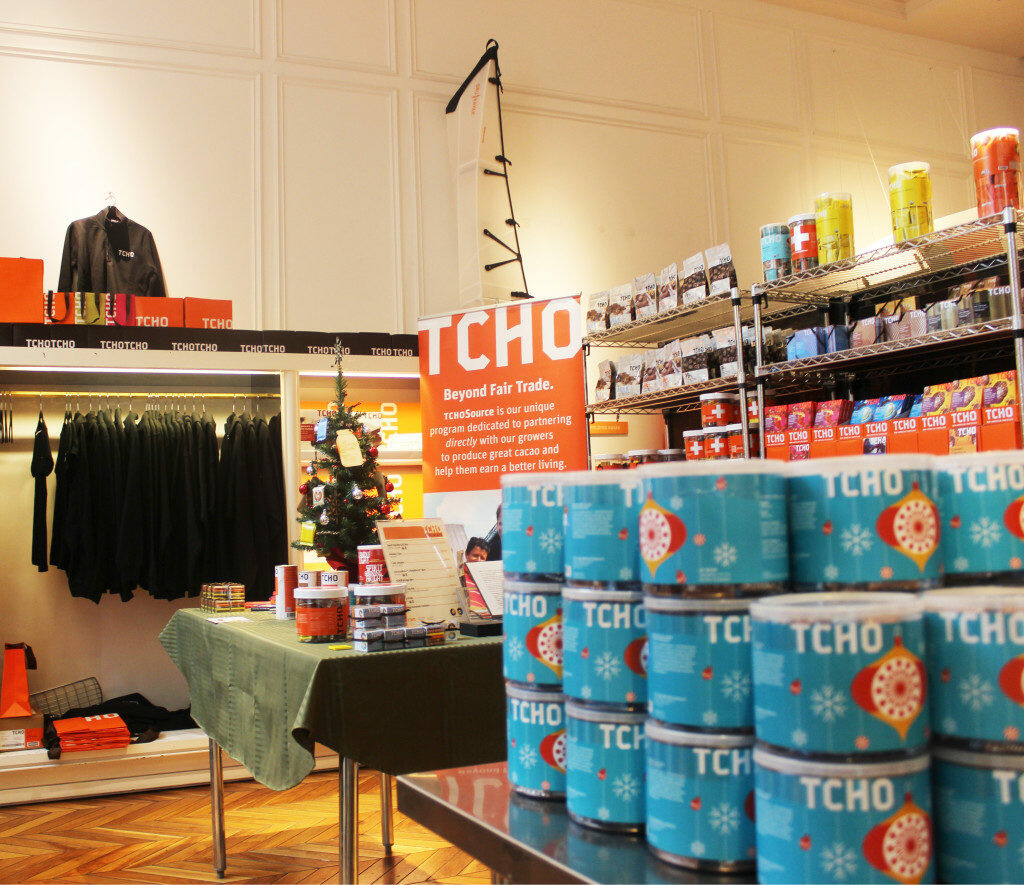
Artisanal chocolatier TCHO opened up a pop-up store in San Francisco to let foodies try their delicious and unique product. The shop was as much a feast for the eyes as it is for the belly, and was providing full details about the ten-year-old company’s scientist-monitored bean-to-bar laboratories in cacao-growing communities and its relationships with cacao farmers around the world.
23. India Store: a pop up to experience the hand-picked product
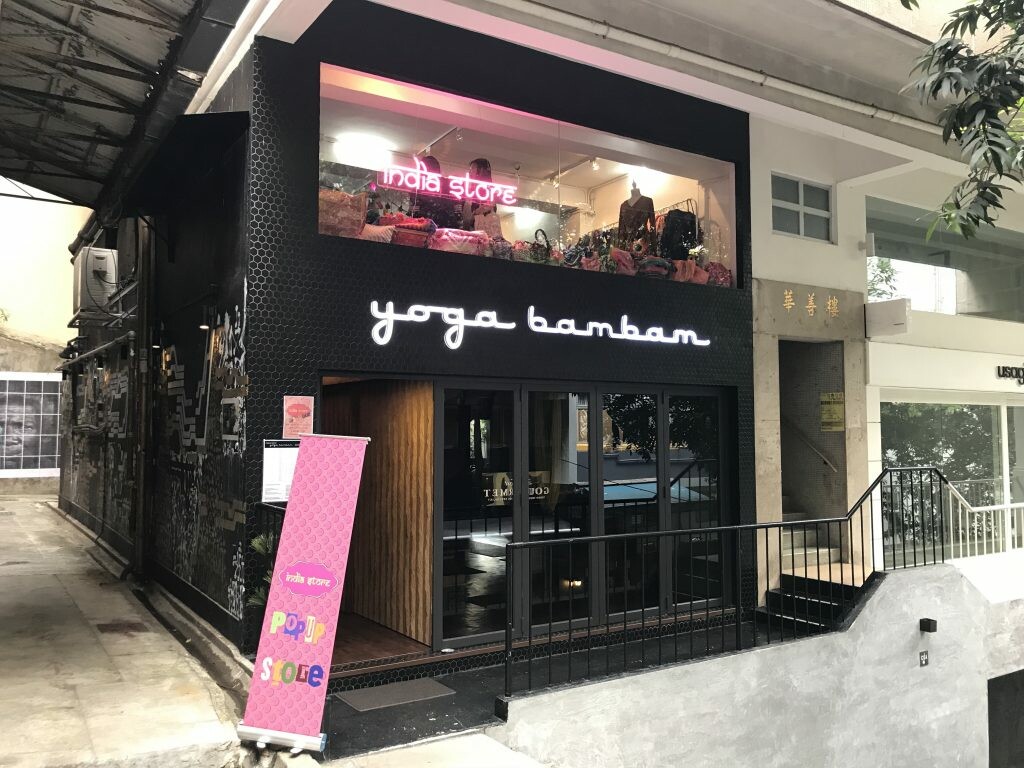
Setting a clear pop-up shop idea and concept drives more consumers and media attention. Storefront worked with India Store to create a pop-up shop in Hong Kong where customers can feel the quality of the hand-picked fabrics. With this physical store, the brand can show off its items and connect with customers, who also benefit from this in-person experience. India Store is a simple pop up shop idea that’s well-executed and has the customer in mind.
What can we learn from these pop up store concepts?
Social Promotion
The last couple of years saw some of the most hyped pop-up stores ever. With social media playing a vital role in the promotion and inevitable success of these pop-ups, it’s clear to see that typical advertising techniques previously used to get customers into stores are rendered irrelevant when it comes to pop-up stores. Keeping your audience in-the-know builds engagement and creates a connection they’re likely to share.
Exclusivity is Key
According to a PopUp Republic poll, 39% of shoppers indicated that the main reason they’d visit a pop-up store would be because of exclusive products or services on offer. Limited edition products, one-off events, and special appearances are a sure-fire way to build hype as your pop-up approaches. Sharing teasers across social media platforms emphasizing the ‘get it before it’s gone’ notion will generate the kind of buzz that money can’t buy among your audience.
Be Smart with Gimmicks
Make your pop-up work beyond the shop floor by giving people something to talk about. Creative signage and store-fits that provide photo opportunities will give people something to post on their Instagram whilst also elevating your products. This extra effort could also serve to cement your brand’s key values or mission, further engaging your audience to make for a lasting connection.
Feeling inspired by these creative pop up shop picks? Book a pop-up store with us and bring your ideas to life!

Using pop-up stores to test new products and markets
Pop-up stores are becoming an increasingly popular way for businesses to test new products and markets. By renting out a small space for a short period of time, businesses can get a feel for whether a particular product or market is right for them without making a large investment.
When considering using a pop-up store to test a new product or market, there are a few things to keep in mind.
- First, ensuring that the space is located in a high-traffic area is important. This will help ensure that potential customers are aware of the store and can visit it.
- Second, it is important to have a well-designed space that appeals to customers. This will help to create a positive first impression and encourage customers to spend time in the store.
- Finally, it is important to have a plan for how to staff the store. This includes having employees who are knowledgeable about the products and the market.
Read More: How Pop-Up Stores Can Help You Take Your Product Development to the Next Level
Pop-up shop ideas FAQ
Is a pop-up shop a good idea?
A pop-up shop is a great way to test out a new product or service in a temporary space. This can be a great way to gauge customer interest and get feedback on your offerings. It can also be a great way to build brand awareness and create excitement around your business. However, there are a few things to keep in mind before opening a pop-up shop.
Make sure you have a clear plan and purpose for your pop-up shop. Know your target market and make sure your pop-up shop is located in a place that makes sense for your business. And finally, make sure you have the resources in place to staff and stock your pop-up shop. A pop-up shop can be a great way to grow your business if you can do all of this.
How do I make my pop-up shop stand out?
As the popularity of pop-up shops grows, so does the competition. If you’re looking to open a pop-up shop, you’ll need to find a way to make yours stand out from the rest. Here are a few tips:
First, choose a unique location. A pop-up shop in a busy mall is likely to get lost in the shuffle, but a pop-up shop in a converted warehouse or an unused storefront in a trendy neighborhood will be more likely to turn heads.
Second, create a strong visual identity for your shop. This means coming up with a cohesive look for your signage, branding, and merchandising that will make your shop easily recognizable.
Third, stock your shop with unique, high-quality merchandise. This is perhaps the most important factor in making your pop-up shop stand out. Curate a selection of items that you know will appeal to your target market and that they won’t be able to find anywhere.
Are pop-up shops cost-effective?
It’s no secret that retail is in a state of flux. To stay ahead of the curve, brands are increasingly turning to pop-up shops as a way to reach consumers. But are they really cost-effective?
There are several factors to consider when evaluating the cost-effectiveness of pop-up shops. First, there’s the cost of the physical space. Then there’s the cost of inventory, staffing, and marketing. And finally, there’s the opportunity cost of not investing in a more traditional brick-and-mortar store.
When done right, pop-up shops can be a cost-effective way to reach consumers and generate buzz for a brand. However, there are some factors to consider before diving in. By taking the time to understand the costs and benefits, brands can ensure that their pop-up shop is a success.
How to find the perfect space for your pop-up shop idea?
When planning a pop-up shop, the first step is to decide what type of space you need. Many types of pop-up spaces are available, so it’s important to choose the one that best suits your needs. Here are some things to consider when choosing a pop-up space:
- The type of products you’re selling
- The size of your pop-up shop
- The location of your pop-up shop
- The duration of your pop-up shop
Each type of pop-up space has its own benefits and drawbacks, so it’s important to weigh all of your options before making a decision. If you’re unsure what type of space is right for you, consider consulting with a pop-up shop expert. They can help you choose the perfect space for your needs and budget.
Read More: The 5 Types of Pop-Up Space and How to Figure Out What’s Right for You
Conclusion
In conclusion, the pop-up experience is a great way to reach new customers and showcase new products, but it can be challenging to design. Some companies use pop-ups to get to know their customers better. Others use them for promotional events.
- How to Open a Successful Pop-Up Shop in London’s Fast-Fashion Neighborhoods - December 23, 2022
- The Benefits of Opening a Pop-Up Shop in NYC’s Fast-Fashion Neighborhoods - December 23, 2022
- Reaping the Benefits of Long-Term Pop Up Stores: Tips and Advice - December 23, 2022


